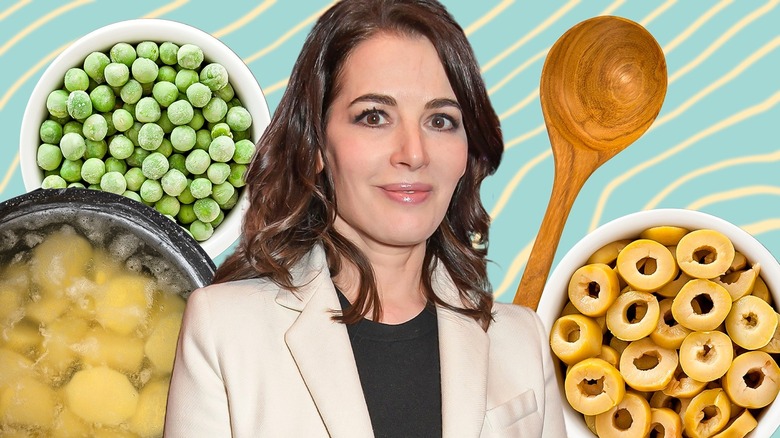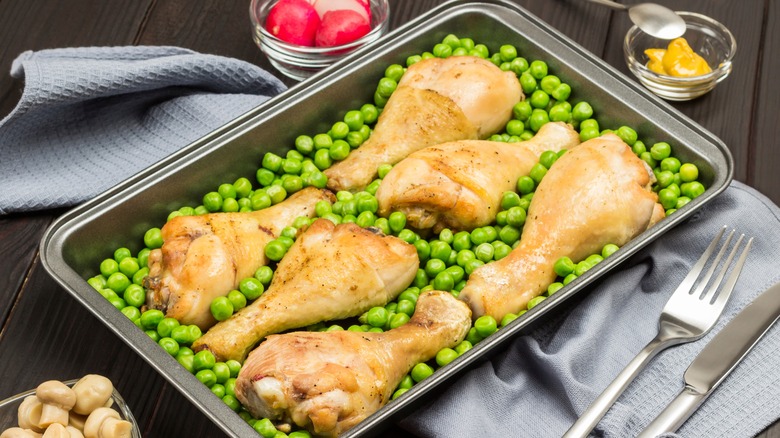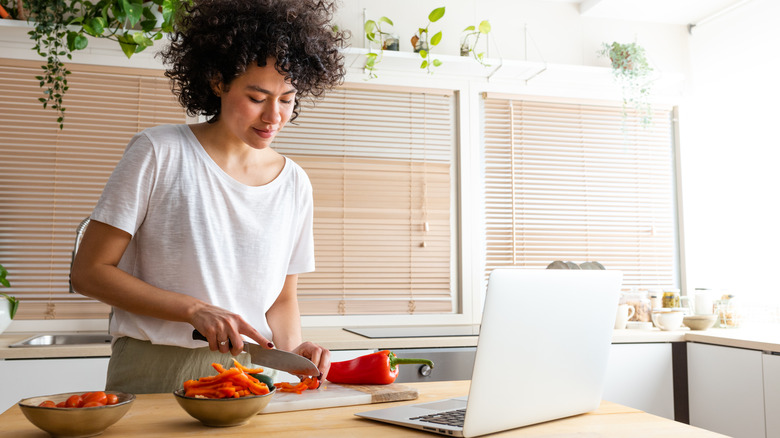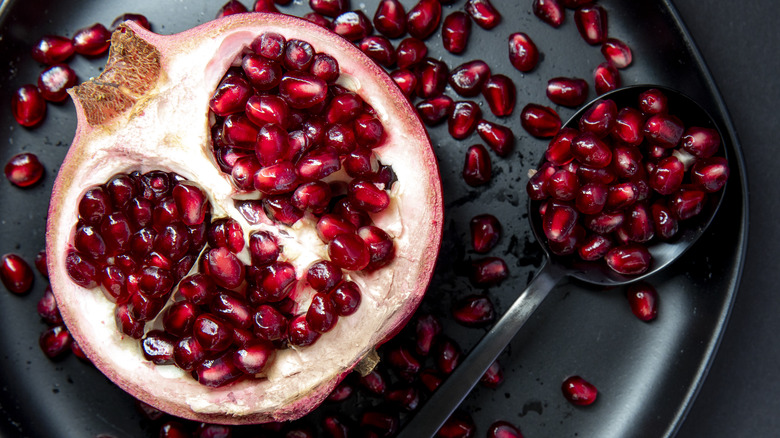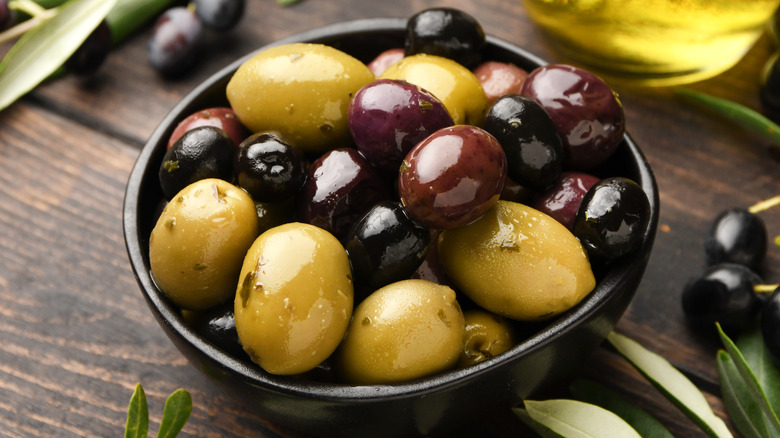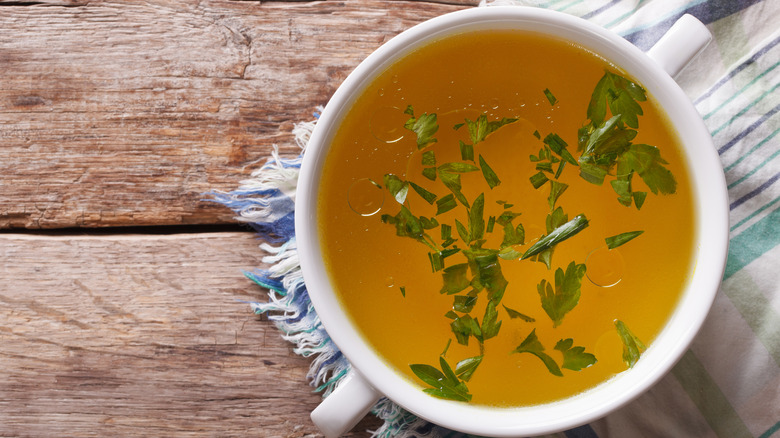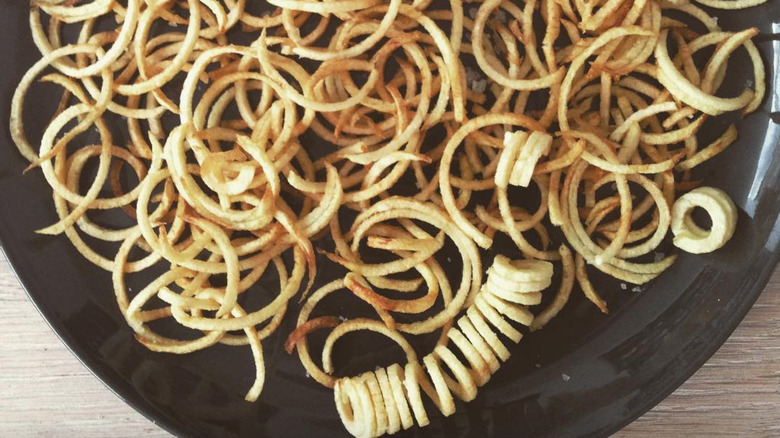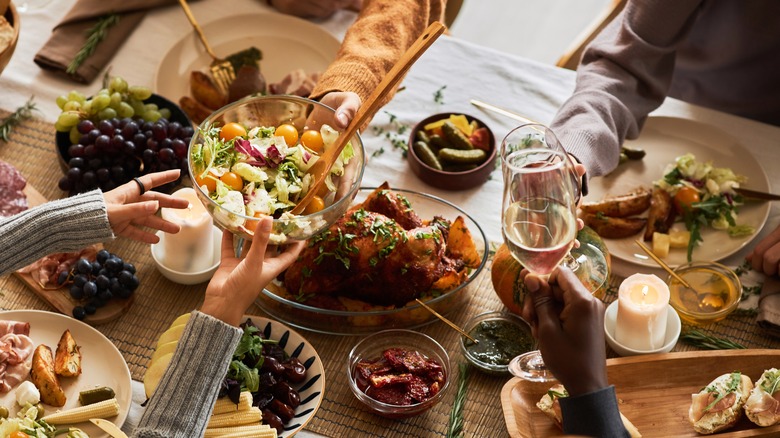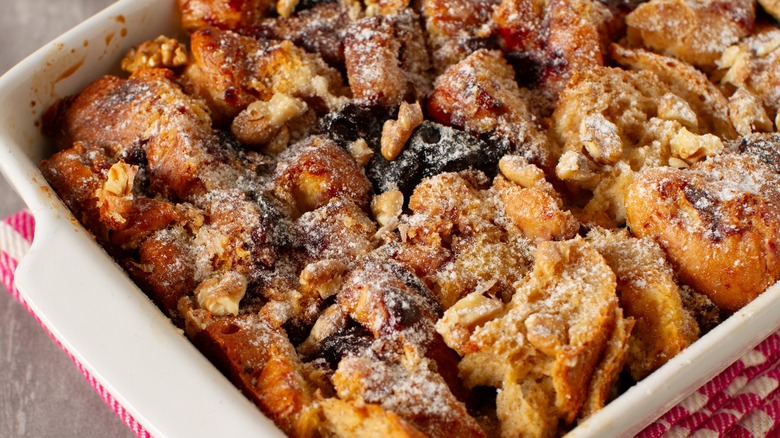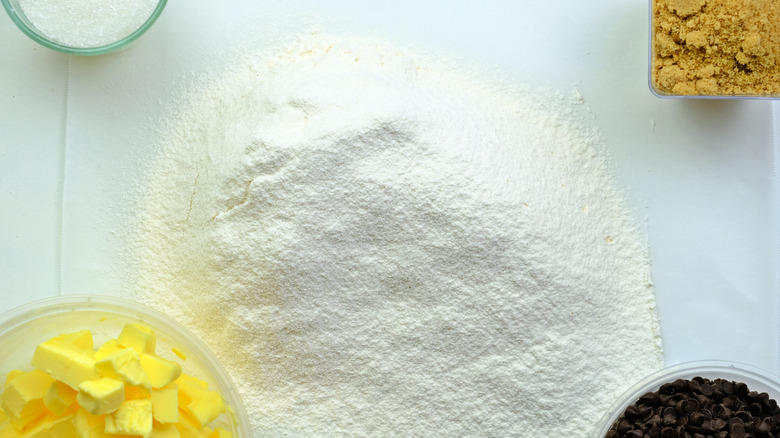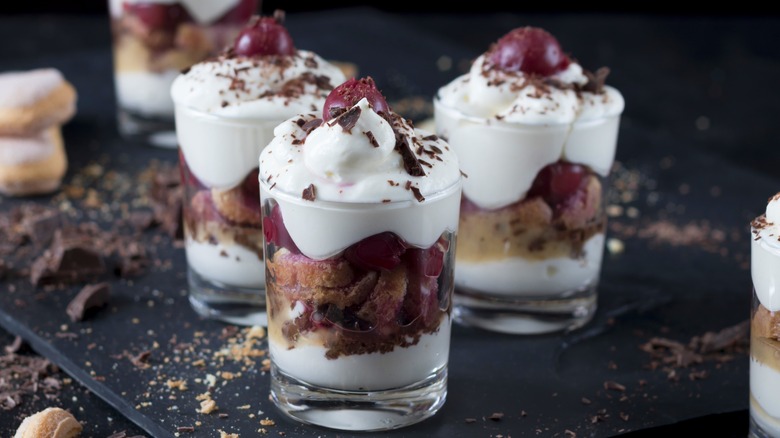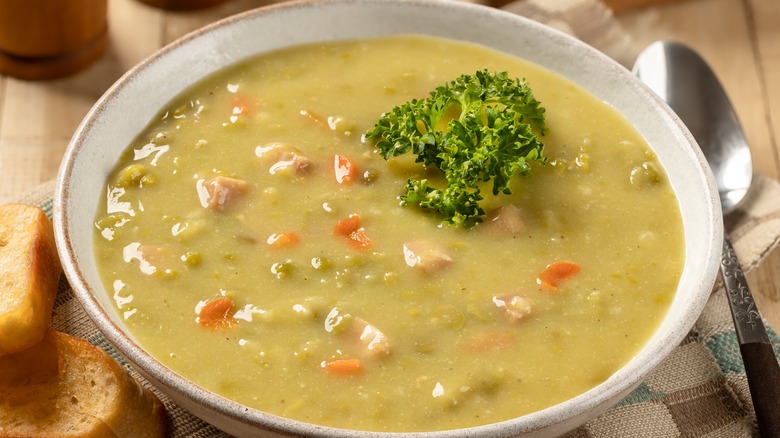The 11 Best Cooking Tips We Learned From Nigella Lawson
Nigella Lawson is a beloved figure in the culinary world. She has enchanted audiences for decades with her approachable and indulgent cooking style. Known for her emphasis on the joy of food and the pleasure of cooking, Nigella has inspired countless home cooks to embrace the kitchen with enthusiasm and creativity. Her philosophy is not just about the end result but the entire process of cooking, from the selection of ingredients to the final presentation. This holistic approach has made her unique tips and tricks invaluable to those who wish to elevate their home cooking.
Nigella's cooking style often incorporates everyday ingredients and kitchen equipment in innovative ways, making her recipes both accessible and exciting to home cooks of all skill levels. Whether it is through her television shows, cookbooks, social media posts, or public appearances, Nigella's insights are always delivered with warmth and a touch of fun, making her advice feel like it's coming from a trusted friend.
For fellow Nigella fans, we've decided to delve into some of the best cooking tips we've learned from chef Nigella Lawson. These tips are sure to not only enhance your culinary skills but also bring a bit of Nigella's magic into your own kitchen. From clever uses of potato water to innovative (and easy!) dessert ideas, each tip reflects Nigella's practical yet imaginative approach to cooking. Whether you're a seasoned home cook or a kitchen novice, these insights will help you cook with more confidence, creativity, and joy — just like Nigella.
Layer frozen peas as a base for a traybake dinner
Frozen peas are a staple in many kitchens, but their uses are usually limited to serving as a side or as an ingredient in dishes like soups and casseroles. Nigella suggests using them in a slightly unconventional way instead. The chef and cookbook author says she layers them as a base for a delicious chicken and pea traybake, a trick she learned from cook and friend Alex Andreou.
In her recipe, she says to spread a generous layer of frozen peas on your baking tray before adding your other ingredients. She uses leeks, garlic, fresh dill and skin-on chicken thighs. However, she says you can add any ingredients you want such as chicken breast, fish, or additional vegetables. As the traybake cooks, the peas will absorb the flavors of the other ingredients while retaining their sweetness and texture. They'll also release steam which Nigella says helps to keep protein like chicken perfectly tender.
This method not only adds a nutritional boost but also saves time, as there's no need to thaw the peas beforehand. It's a simple yet effective way to elevate a basic traybake into something more vibrant in both color and flavor. This technique also ensures that the peas stay moist and tender, creating a delicious contrast with the other roasted ingredients.
Repeat recipes often to truly understand them
Although there are a million recipes available at the click of a mouse, and it can be exciting to try new things, Nigella encourages home cooks to repeat recipes frequently. For Nigella, mastering a recipe comes with practice and familiarity, according to Forbes. The chef says that making the same dish multiple times helps you develop a deeper understanding of its nuances, from ingredient interactions to timing. The repetition of making the same recipe over and over again builds confidence and allows you to identify subtle ways in which you can improve the dish.
Once you've truly grasped the core of a recipe, you gain the freedom and confidence to experiment and make it your own. This approach fosters creativity and innovation in the kitchen, transforming you from a recipe follower into an intuitive home cook.
Nigella's emphasis on repetition and practice helps home cooks build a strong foundation of basic cooking skills, enabling them to explore and expand other, more unique recipes with confidence. This tip highlights the importance of patience, commitment, and persistence in the kitchen. Leave it to Nigella to remind us that great cooking skills are honed over time through dedication and a willingness to learn from each experience.
Use a wooden spoon to thwack seeds out of a pomegranate
Pomegranates add great taste, color, and texture to a variety of dishes, and are even delicious to eat on their own. However, this tough-skinned fruit can be notoriously tricky to deseed. Nigella's clever hack simplifies the process. According to the chef, all you need is a knife and a wooden spoon to get the seeds out. In a tweet on X, formerly known as Twitter, Nigella writes to cut the pomegranate in half and hold it over a bowl, cut side down. Then firmly "thwack" the back of the fruit with a wooden spoon, and watch as the seeds effortlessly fall out.
This method is not only efficient but also fun, turning a potentially tedious task into a way to expel some frustration. The wooden spoon's broad surface ensures that the seeds are dislodged quickly from the skin without damaging them, a common issue when trying to dig out the seeds with a spoon or a knife. With Nigella's method, the seeds maintain their vibrant appearance and juicy texture for use in your salads, desserts, snacks, or garnishes. This technique saves time and minimizes mess, making it easier to incorporate pomegranate seeds into your meals. By adopting this simple trick, you can add a burst of color and flavor to your dishes with ease, embracing Nigella's love for fresh and vibrant ingredients.
For vegans, substitute chopped olives for anchovies
Whether, chopped, pureed, or whole, anchovies are often used to add a savory depth to dishes. For vegans or those avoiding fish, though, it may seem like recipes containing anchovies are off-limits. Nigella solves this problem by using chopped olives as a vegan-friendly substitute. Olives are soft in texture and provide a similar umami punch and saltiness, making them an excellent alternative for the preserved fish. According to Nigella's recipe for spaghetti with chard, chilli, and anchovies, finely chopped black olives can be used as a good substitute for the anchovies. She prefers to use semi-dried olives, often found in foil pouches or packed in jars, or high-quality unpitted olives in olive oil.
This substitute would also work well in pasta sauces, tapenades, and salad dressings. It not only caters to dietary preferences but also adds a unique flavor profile to your dishes, since the briny, rich taste of olives can mimic the complex flavor of anchovies. It's a simple swap that broadens your cooking.
Additionally, this substitution is a great way to experiment with Mediterranean flavors and introduce new ingredients to your kitchen. Nigella's tip makes it easy for home cooks to adapt recipes to suit different dietary needs without sacrificing flavor. By incorporating this advice, you can create delicious and satisfying dishes that everyone can enjoy, regardless of their dietary restrictions.
Save chicken bones to make chicken stock
One of Nigella's most helpful tips is to save chicken bones to make homemade stock. This practice not only resourceful, but also ensures you always have delicious, homemade, fresh stock on hand to enhance the flavor of your homemade soups, stews, sauces, and more. After roasting or deboning chicken, collect the bones and store them in the refrigerator as soon as possible after removing the meat. Nigella recommends refrigerating within two hours to ensure freshness. Once refrigerated you can then freeze the bones for up to three months or until you have enough to make a batch of stock.
To make homemade chicken stock, bring the bones to a boil with water, vegetables, and herbs before simmering for several hours, according to Nigella's website. After, you'll have a rich, flavorful stock that is sure to surpass any store-bought version. Making your own stock has many benefits, including allowing you to control the seasoning, ensure the quality of the ingredients, and avoid preservatives. The result is a healthier, more delicious base for your cooking that can be used in a variety of dishes, from risottos to gravies. This tip encourages a zero-waste mindset in the kitchen, making the most of every ingredient and reducing food waste.
Use a spiralizer for thin fries
Many professional chefs champion kitchen gadgets that make cooking more fun and efficient, and Nigella is no different. One tool that she uses in a unique way is the spiralizer. While typically used for creating vegetable noodles out of zucchini, squash, cucumbers, or sweet potatoes, Nigella suggests using it to make thin, curly French fries. This technique is perfect for achieving uniformly thin fries that cook quickly and evenly and help ensure your spiralizer doesn't go unused in your kitchen cabinet.
To achieve the best homemade curly fries, simply spiralize your potatoes, toss them with a bit of oil and seasoning, and bake or fry them until crispy. The result is a delightful twist on classic fries that is sure to impress both kids and adults alike. It's a playful yet practical application of the spiralizer, showcasing Nigella's knack for creative cooking solutions. So, if you're tired of the vegetable noodle trend, give Nigella's shoestring French fries a try.
Aim for quality, not quantity, when serving many guests
It can be overwhelming to host a large gathering, whether for a holiday or a dinner party. To avoid becoming too stressed during the planning and execution of hosting a group dinner, Nigella advises focusing on quality rather than quantity, according to well+good. Instead of overwhelming yourself with a multitude of dishes, select a few recipes that make a large enough amount to feed your guests that you're confident you can execute exceptionally well. This approach ensures that each dish shines and reduces the stress of juggling numerous preparations.
Nigella's philosophy ensures enjoyment for both the cook and the guests. By concentrating on a handful of high-quality dishes, not only do you reduce your workload, but you also can put more care and attention into each one, creating a more memorable dining experience. This strategy is great for special occasions when you want to enjoy the event without being tied to the kitchen.
Use Laughing Cow cheese instead of butter in bread pudding
Bread pudding is a comforting, classic dessert that many chefs have put their own twists on. That includes Nigella Lawson, whose twist involves using Laughing Cow cheese instead of butter. In her recipe for Ocado, Nigella calls Laughing Cow cheese "the treatiest of treats" — and although she acknowledges it doesn't seem like a great ingredient for a dessert, she insists that the addition of it makes her take on classic bread pudding unforgettable.
The soft, creamy cheese melts beautifully into the pudding, adding a subtle tanginess in the flavor that is akin to cheesecake. This unexpected but delightful substitution also enhances the dish's texture, making it creamy in a way that butter cannot.
To try it, Nigella says to simply spread Laughing Cow cheese on your bread slices and sprinkle them with caster sugar before layering them in the baking dish. The cheese's smooth consistency ensures that each bite of the pudding is rich and indulgent while the sugar makes the dessert perfectly sweet. This clever modification doesn't eliminate butter, however. Nigella's bread pudding also includes custard made with butter, eggs, and vanilla, making it an even more decadent dish. If you are hesitant to try it, Nigella promises that one bite of the cheesecake-like dessert will change your mind.
DIY your own self-rising flour
Self-rising flour is a convenient ingredient for a variety of baked goods, but if you don't have it on hand, Nigella has a simple and easy solution — make your own. According to Nigella's website, all you need to do is combine one cup of all-purpose flour with two teaspoons of baking powder. You want to make sure the blend is mixed thoroughly, so Nigella suggest sifting the ingredients. If you don't have a sifter, you can whisk them together in a bowl. Either way, this foolproof tip will ensure you have a perfect substitute for store bought self-rising flour.
If your recipe requires the addition of cocoa, yogurt or buttermilk, Nigella suggests also adding a ¼ teaspoon baking soda in addition to the baking powder, since those ingredients tend to require additional leavening for the proper rise. It's also important that your baking soda and powder are not out of date, as that could impact their ability to help your baked goods rise. This DIY approach is not only cost-effective and space saving, but also ensures you can bake without interruption no matter what your recipe calls for.
Layer store-bought gingerbread or cake with boozy cream for an easy holiday dessert
It can be hard to find ways to impress guests during the holiday season while maintaining your busy schedule. Luckily, Nigella has an ingenious tip for a quick and impressive holiday dessert, which she shared with the BBC. The chef recommends layering store-bought gingerbread or ginger cake with homemade, boozy cream for a trifle or parfait dessert sure to get people talking. This no-bake treat is perfect for festive gatherings, is affordable, and, most importantly, easy to make.
According to Nigella, simply whip some heavy cream with your favorite liqueur, such as brandy, rum, or Bailey's, until soft peaks form. Then layer slices of gingerbread cookies or ginger cake with the spiked cream in individual glasses or a trifle dish, allowing the flavors to meld together in the fridge. You can even add layers of chopped chocolate or fruit to make the dessert your own.
The spiced gingerbread pairs beautifully with the rich, liqueur-infused cream, creating a dessert that feels indulgent and sophisticated but requires minimal effort. Additionally, this dessert can be prepared in advance, giving you more time to enjoy the festivities with your guests. Nigella's easy approach to holiday desserts emphasizes the importance of allowing some shortcuts in the kitchen so you can create memorable treats without the stress.
Use potato water to make delicious vegetable soup
One of Nigella's most ingenious tips comes from her cookbook, "At My Table: A Celebration of Home Cooking." The chef advises saving the water in which you've boiled potatoes for later use as a base for vegetable soup. This starchy liquid is often discarded, but is actually rich in nutrients and adds a subtle creaminess and body to soups without the need for additional thickeners. After boiling potatoes, simply reserve the water and use it as the liquid component when making a vegetable soup. According to Nigella, you can save the potato water in the fridge for up to five days.
Nigella says this not only enhances the flavor of homemade soups but also reduces waste. Plus, the starchy quality of the potato water gives your soup a lovely, velvety texture, making it more satisfying. For "the best vegetable soup in the world," Nigella suggests using four cups of potato water to cook five and a half cups of frozen peas. Once cooked, she purees the mixture until smooth. The result is a previously discarded ingredient making a big difference in a basic vegetable dish. This technique underscores the importance of making the most out of every ingredient and finding joy in the little things in cooking.
